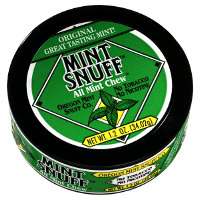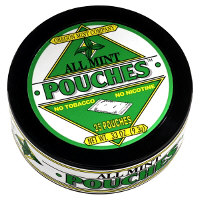Prevention is the best medicine!
It is easier to try to prevent a person from ever using tobacco than trying to get them to quit once they have begun.
However, some tobacco chewers, especially children and adolescents, don't comprehend tobacco dangers until they are into their late teens if at all and by that time might have been chewing for five or ten years.
Research suggests the success rate for tobacco cessation in a health practitioner's office is somewhere around five percent. But that does not mean that there is a ninety-five percent failure rate!
The person who receives the quit message may not, and probably won't, quit immediately, but, he may get the same message from others like a nurse, his wife, a friend or others and later reflect about what was told to them.
Eventually, after many intervention episodes, the patient may make his own decision to quit and often comes back to the dentist or hygienist for help in doing so.
Health professionals shouldn't grade themselves on how many people they can "get" to quit, but rather how many times they give the message when the opportunity arises.
Under these criteria, there is no reason not to have an intervention success approaching 100%. Once the patient has made the decision to quit, then the professional should be ready with suggestions.
Smokeless Tobacco Intervention
and the Health Professional
While about 75% of health providers think it is a good idea to tell patients about tobacco
dangers, only about ten percent routinely do so. Research shows that the reasons they
don't get involved are a combination of not feeling confident about the subject,
questionable goals of doing so, afraid of a negative reaction from the patient, feel that
the patient would be offended, there is not enough reimbursement to get into cessation or
they just don't have enough time.
Kids hear about chewing tobacco at an early age due to tobacco advertising, store displays, friends and even unknowing parents introduce smokeless tobacco to some kids as young as 3 to 9 years.
By the time a child is ten, they may know what smokeless tobacco is but they may not understand what the dangers are.
When a health professional asks a child if they know about, or even use smokeless tobacco, a golden intervention opportunity exists.
When a health professional identifies that a patient is using tobacco, there are many intervention opportunities available.
The obvious one is to show them how evident it is that they chew tobacco by pointing out gum recession, tooth decay, leukoplakia or other histological effects caused by tobacco use and offering a brief message that they should quit.
Graphic pictures, brochures, videos or other information could be provided, depending on the time available and receptiveness of the patient.
Asking whether or not they know how dangerous spit tobacco is, often brings the surprise reaction that they don't know that smokeless is a health risk.
If the patient doesn't use tobacco, a professional can take a moment to congratulate them for non-use, tell them their own position on the use of tobacco, and solicit a promise from them that they will never use tobacco. If we can keep a child away from tobacco until they are about eighteen, there is a very good chance that they will never use tobacco.
Research shows that one of the main reasons young people start using tobacco is social pressures or imagery.
Kids usually get their first "dip" from a friend or family member. Shockingly, some kids have admitted they are willing to risk their health in order to have the circle on their back pocket or to just "fit in" with other young chewers. Trying to compete against this peer pressure or social imagery can be perplexing for health advisors.
The Role of an Alternative
Dealing with the social and behavioral aspects can be tough. For kids who chew for social
or image reasons, a professional can either try to convince them to quit "cold
turkey" or offer an alternative that provides them the same social imagery and
behavior but is harmless.
Some of these alternatives are sunflower seeds, bubble gum and sugarless candy which, although somewhat acceptable, don't offer the same perceived benefits as their chew.
Two alternatives which are safe, food grade products are Mint Snuff All Mint Chew and Mint Snuff Pouches produced by the Oregon Mint Snuff Company (1-800-EAT-MINT; www.mintsnuff.com ). These products are made from mint, not tobacco and offer the same look, feel and behavior as tobacco.
By giving a chewer Mint Snuff, a professional is meeting the user "half-way" and providing a positive experience during the intervention phase. Naturally, it's better if the chewer didn't do the behavior at all, but if they are going to chew anyway, it's better they used mint instead of tobacco.
The availability of an alternative greatly increases the health professional's chances of helping their patients quit tobacco. Rather than hand-wringing and chanting "you should quit" they can say: "try this!"
From November 1990 through December 1998, the Oregon Mint Snuff Company has given over 1 million free cans of non-tobacco chew as well as thousands of educational posters and brochures to dentists, hygienists, county health departments, and other health professionals. Over 10,000 dentists, hygienists, and other health professionals have received samples and recommend Mint Snuff to their patients.
Cessation Methods
Why do people chew tobacco? There is no one way to help people quit chewing tobacco just
as there is no one reason they chew. Like cigarettes, there seems to be the same three
main reasons for chewing: social/psychological, behavioral and physical
(nicotine addiction).
Different social, cultural and behavioral influences have raised new challenges for intervention and cessation techniques. A cessation method that works in one state or community may not work in another. For instance, a young chewer in North Carolina might, sociologically, have radically different needs than a chewer in Arizona because tobacco is part of the economic base of the community. "Uncle Joe grows tobacco...it can't be bad!"
Another interesting example is Alaskan Indians, who would use Mint Snuff instead of tobacco as long as it was provided free - but when they had to pay any amount of money for it, would chew tobacco instead.
In order to address all three aspects of the chewing behavior (physical, psychological and social) while at the same time being sensitive to different cultural demands of various societies, we have listed a compilation of ideas we've collected here: Developing a Cessation Program For Your Clinic and Personal use
Turning Smokeless
Tobacco Intervention into a Practice Builder
Smokeless tobacco intervention can be a good practice builder. Health practitioners offer
help to people for a problem that is widespread and lacks conventional assistance. Quite
often the person asking for help is not the chewer, but rather a parent or friend who
wants to help someone they know quit tobacco.
Dental practices that let their community know that they are concerned and have possible solutions to this problem are doing great public relations and a great public service.

